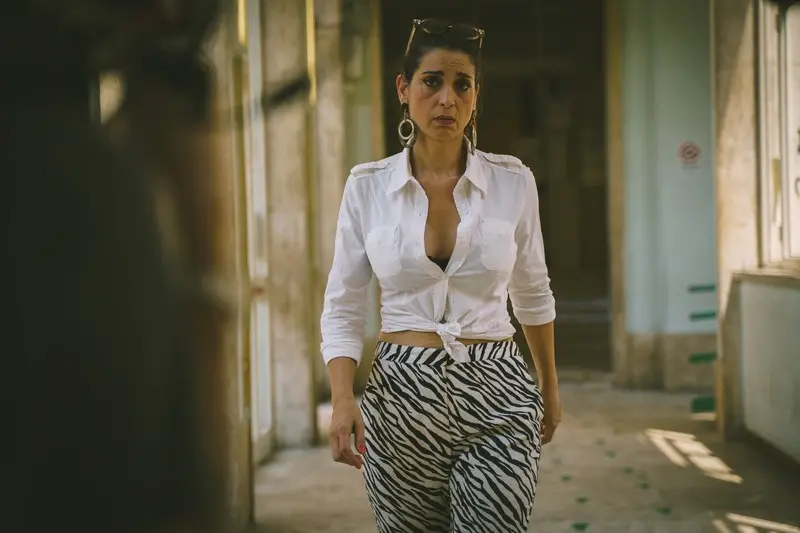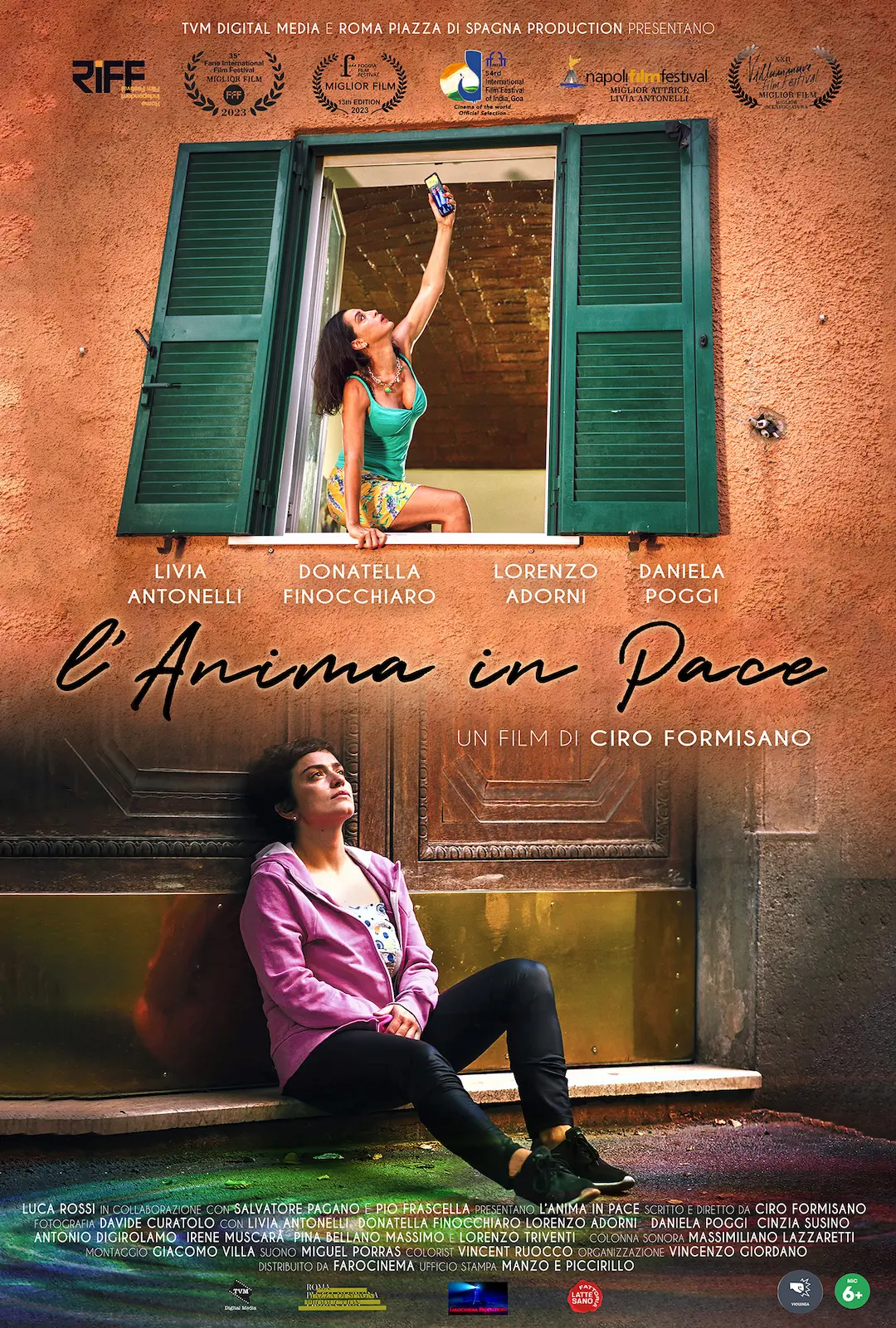
We use cookies
We use cookies and other tracking technologies to improve your browsing experience on our website, to show you personalized content and targeted ads, to analyze our website traffic, and to understand where our visitors are coming from.

L’anima in pace, second film directed by Ciro Formisano, is set in Rome during lockdown when residents were confined to their homes. Dora (Livia Antonelli) delivers grocery shopping for a supermarket. During her day, she sees building doors and entrances, lifts, individual front doors through which she peeps for the time it takes to bring in bottled water and heavy bags of shopping and, for some, drugs from Yuri (Antonio Digirolamo).
She lives with her mother (Donatella Finocchiaro) in an aunt’s house, on the edge of the city. The city is deserted but recognisable from the quick frames that show some of the most iconic monuments and areas of Rome such as via della Conciliazione, the courthouse of piazza Cavour, known as the “palazzaccio”, piazza del Popolo with twin churches that flank via del Corso, piazza di Spagna and the staircase of Trinità dei Monti, the Tiber river and its bridges.
However, the main focus is really the outskirts of the city, an anonymous place where people scrabble to make a living without any hope of changing things. It is here, in the neighbourhood of Quarticciolo, in the east of Rome, in via Manduria to be precise, that Dora meets Andrea (Lorenzo Adorni) who gives her hope for a better future.
L’anima in pace, second film directed by Ciro Formisano, is set in Rome during lockdown when residents were confined to their homes. Dora (Livia Antonelli) delivers grocery shopping for a supermarket. During her day, she sees building doors and entrances, lifts, individual front doors through which she peeps for the time it takes to bring in bottled water and heavy bags of shopping and, for some, drugs from Yuri (Antonio Digirolamo).
She lives with her mother (Donatella Finocchiaro) in an aunt’s house, on the edge of the city. The city is deserted but recognisable from the quick frames that show some of the most iconic monuments and areas of Rome such as via della Conciliazione, the courthouse of piazza Cavour, known as the “palazzaccio”, piazza del Popolo with twin churches that flank via del Corso, piazza di Spagna and the staircase of Trinità dei Monti, the Tiber river and its bridges.
However, the main focus is really the outskirts of the city, an anonymous place where people scrabble to make a living without any hope of changing things. It is here, in the neighbourhood of Quarticciolo, in the east of Rome, in via Manduria to be precise, that Dora meets Andrea (Lorenzo Adorni) who gives her hope for a better future.

TVM Digital Media, Farocinema, Roma Piazza Di Spagna Production
Twenty-five-year-old Dora appears tough and impervious. Her job is to carry people’s grocery shopping home, the heavy work is not the only difficulty in her life. Her mother, recently released from prison, is untrustworthy and unstable and, because of this, her brothers, twins Massimo and Nunzio, have been put into foster care. They live with an aunt on the outskirts of the city. Dora tries to put money aside, from her job and from her work for Yuri the drug dealer, the good-looking badboy of the area. She needs the money to build herself a new life, to get the twins back, hoping that they will be given to her at the next court appearance. She appears to have a lucky break with Andrea, a young medical student who tries to help, until Yuri finds out about their sincere, wholesome relationship.
Do you want to be deleted? Send an email to: info@italyformovies.it
Do you want to be deleted? Send an email to: info@italyformovies.it
